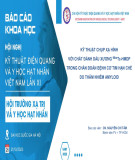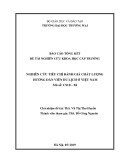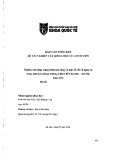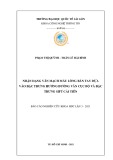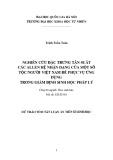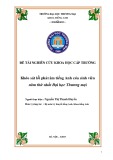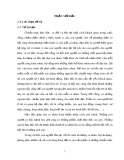
Available online at http://ccforum/content/10/1/304
Evidence-Based Medicine Journal Club
EBM Journal Club Section Editor: Eric B. Milbrandt, MD, MPH
Journal club critique
Early recombinant activated factor VII for intracerebral hemorrhage
reduced hematoma growth and mortality, while improving functional
outcomes
Lillian L. Emlet1 and David Crippen2
1 Clinical Fellow, Department of Critical Care Medicine, University of Pittsburgh School of Medicine, Pittsburgh, Pennsylvania, USA
2 Associate Professor, Department of Critical Care Medicine, University of Pittsburgh School of Medicine, Pittsburgh, Pennsylvania, USA
Published online: 6 January 2006
This article is online at http://ccforum/content/10/1/304
© 2006 BioMed Central Ltd
Critical Care 2006, 10: 304 (DOI 10.1186/cc3978)
Expanded Abstract
Citation
Mayer SA, Brun NC, Begtrup K, Broderick J, Davis S,
Diringer MN, Skolnick BE, Steiner T: Recombinant activated
factor VII for acute intracerebral hemorrhage. N Engl J Med
2005, 352:777-785 [1].
Hypothesis
Recombinant activated factor VIIa (rFVIIa) can effectively
reduce hematoma growth and improve outcomes when
given within 4 hours of symptom onset in patients with acute
intracerebral hemorrhage.
Methods
Design: International multi-center randomized placebo-
controlled trial.
Setting: Emergency departments and intensive care units
in 73 hospitals in 20 countries.
Subjects: 399 adults age 18 years or older with
spontaneous intracerebral hemorrhage documented by CT
scanning within 3 hours of onset of symptoms. Exclusion
criteria included a score of 3 to 5 on the Glasgow Coma
Scale (indicating deep coma); planned surgical evacuation
of hematoma within 24 hours after admission; secondary
intracerebral hemorrhage related to aneurysm,
arteriovenous malformation, trauma, or other causes; known
use of oral anticoagulant agents; known thrombocytopenia;
history of coagulopathy, acute sepsis, crush injury, or
disseminated intravascular coagulation; pregnancy;
preexisting disability; and symptomatic thrombotic or vaso-
occlusive disease within 30 days before the onset of
symptoms of intracerebral hemorrhage. Midway through the
trial, the last criterion was amended to exclude patients with
any history of thrombotic or vaso-occlusive disease.
Intervention: Patients were randomly assigned to receive a
single intravenous dose of 40 µg, 80 µg, or 160 µg per
kilogram of rFVIIa (NovoSeven, Novo Nordisk) or placebo.
Treatment was given within one hour after the baseline CT
and no later than four hours the symptom onset.
Outcomes: The primary outcome was percent change in
volume of intracerebral hemorrhage at 24 hours. Secondary
outcomes included 90-day mortality and functional status.
Results
Hematoma volume increased more in the placebo group
than in the rFVIIa groups. The mean increase was 29
percent in the placebo group, as compared with 16 percent,
14 percent, and 11 percent in the groups given 40 µg, 80
µg, and 160 µg of rFVIIa per kilogram, respectively (P=0.01
for the comparison of the three rFVIIa groups with the
placebo group). Growth in the volume of intracerebral
hemorrhage was reduced by 3.3 ml, 4.5 ml, and 5.8 ml in
the three treatment groups, as compared with that in the
placebo group (P=0.01). At 90 days, 69% percent of
placebo-treated patients died or were severely disabled (as
defined by a modified Rankin Scale score of 4 to 6), as
compared with 55 percent, 49 percent, and 54 percent of
the patients who were given 40, 80, and 160 µg of rFVIIa,
Page 1 of 2
(page number not for citation purposes)



